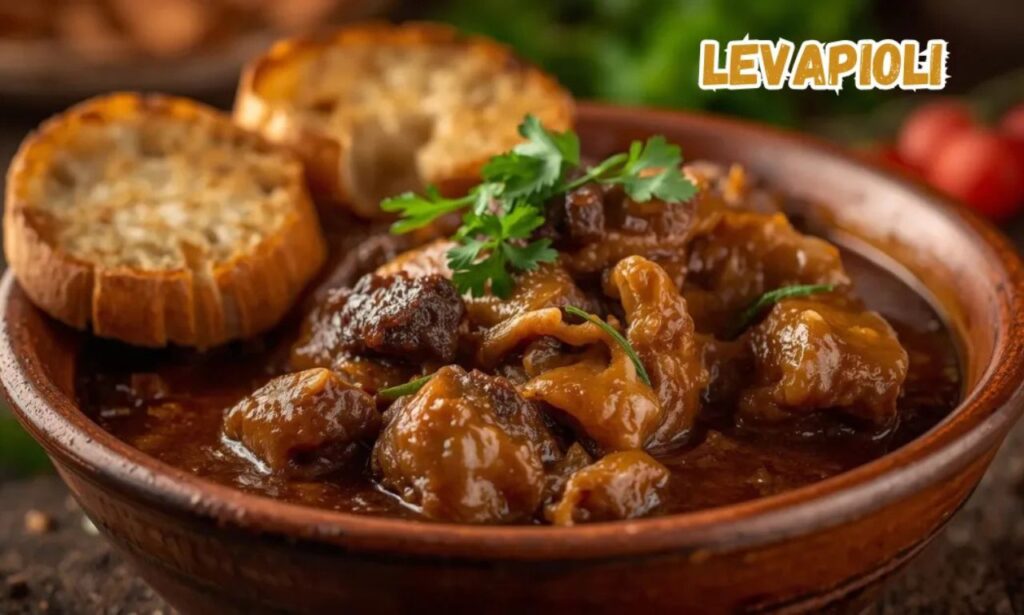Levapioli is more than just a dish; it’s a culinary experience that encapsulates the flavors and traditions of Region Country. This delightful creation has captured the hearts—and stomachs—of many, becoming a staple in both homes and restaurants alike. With its rich history and cultural significance, levapioli stands as a testament to the region’s vibrant heritage.
As we delve into this delicious topic, you’ll uncover what makes levapioli so special. From its origins to modern interpretations, every bite tells a story steeped in tradition. Get ready to explore why levapioli deserves a spot on your culinary bucket list!
What is Levapioli?
Levapioli is a delightful dish that combines simplicity and flavor. At its core, it consists of grilled meat, typically beef or lamb, shaped into patties. The preparation highlights the essence of traditional cooking.
What sets levapioli apart is its distinct seasoning. A mix of spices enhances the natural taste, creating a savory experience with each bite. Often served in flatbreads or accompanied by fresh vegetables and sauces, it offers numerous ways to enjoy this culinary delight.
Originating from the Balkan region, levapioli has evolved over time while retaining its authentic roots. It’s not just food; it’s part of gatherings and celebrations, reflecting community spirit.
Every bite tells a story steeped in culture and tradition. Levapioli embodies comfort food at its finest—simple yet profoundly satisfying for those who indulge in it.
The Origins and History of Levapioli
Levapioli traces its roots back to the rich culinary traditions of the Balkans. This delightful dish has evolved through centuries, influenced by various cultures and historical events.
Originally made with minced meat, levapioli was a staple for shepherds and travelers seeking nourishment on long journeys. The simplicity of its ingredients reflects the resourcefulness of those who crafted it.
As trade routes expanded, spices and cooking techniques from neighboring regions began to shape this beloved meal. Over time, local variations emerged, each adding unique flavors that represent their community’s heritage.
Today, levapioli is more than just food; it’s a symbol of unity among diverse cultures in Region Country. Its preparation often brings families together, making it not only a culinary delight but also an integral part of social gatherings throughout history.
Cultural Significance of Levapioli in the Region Country
Levapioli is more than just a dish; it’s a cultural emblem in Region Country. This savory delight brings people together, often served during family gatherings and community festivals.
Traditionally, sharing levapioli signifies hospitality and warmth. It’s common for families to pass down recipes through generations, preserving the essence of their heritage.
Moreover, levapioli represents regional pride. Each locality adds its unique twist—varieties in spices or cooking methods reflect local tastes and traditions.
The dish also plays an essential role during celebrations. Whether it’s weddings or national holidays, you can expect levapioli to grace the tables, fostering connections among friends and loved ones.
In art and literature, this dish finds representation as well. It symbolizes unity within diversity—a true reflection of Region Country’s rich culinary landscape.
Traditional Levapioli Recipes and Ingredients
Traditional levapioli is a delightful dish that reflects the culinary heritage of its region. At its core, it features ground meat—often lamb or beef—seasoned with garlic and spices. This blend creates a savory explosion in every bite.
The preparation begins with mixing the meat thoroughly, ensuring the flavors meld perfectly. Some recipes incorporate herbs like parsley or mint for added freshness.
Levapioli is typically shaped into small sausages or patties before grilling to perfection. The charred exterior contrasts beautifully with the juicy interior.
Accompaniments are essential too; a fresh salad or creamy yogurt sauce enhances each serving. Bread often serves as an edible vessel, wrapping around these flavorful morsels for easy enjoyment.
Whether enjoyed at home or during community gatherings, traditional levapioli embodies comfort and connection through food.
Modern Twist on Levapioli: Evolution of the Dish
Levapioli has undergone an exciting transformation in recent years. Chefs are infusing traditional recipes with contemporary flavors and techniques, making the dish even more appealing to a broader audience.
Innovative ingredients like artisan cheeses or spicy sauces can elevate the classic version. Some restaurants now serve levapioli on gourmet bread or alongside unique dips, showcasing creativity while honoring tradition.
Fusion cuisine also plays a role in this evolution. Influences from various culinary cultures introduce unexpected elements that excite food lovers. Think of adding Asian spices or Mediterranean herbs for an adventurous twist.
Presentation has become just as important as taste. Modern plating techniques highlight vibrant colors and textures, turning every serving into a visual masterpiece.
These adaptations not only celebrate levapioli’s rich heritage but also invite new generations to experience its charm and flavor in fresh ways.
Festivals and Celebrations Involving Levapioli
Levapioli plays an integral role in local festivals, bringing communities together through food and tradition. Celebrations often showcase this flavorful dish, allowing locals and visitors to indulge in its richness.
During regional fairs, street vendors serve sizzling levapioli from makeshift grills. The aroma fills the air, drawing crowds eager to taste authentic flavors. Families gather around tables adorned with colorful dishes, sharing laughter and stories as they enjoy their meals.
One of the most notable events is the Levapioli Festival held annually in various towns across Region Country. Here, chefs compete for recognition by crafting unique variations of the dish. This culinary showdown highlights creativity while honoring traditional recipes.
Music and dance further enhance these festivities, creating a vibrant atmosphere where culture thrives. From lively performances to cooking demonstrations, each event celebrates not just levapioli but also community spirit and heritage combined with culinary delight.
Why Levapioli Should Be On Your Culinary Bucket List
Levapioli is more than just a dish; it’s an experience. Each bite tells a story of tradition and passion.
Imagine sinking your teeth into freshly grilled meat, enveloped in warm flatbread. The flavors burst forth, tantalizing your taste buds with every morsel. This isn’t merely food; it’s a celebration of culture.
The rich history behind adds to its allure. Originating from humble beginnings, this dish has evolved while retaining its authentic charm.
Whether enjoyed at bustling street markets or upscale restaurants, offers something for everyone. It invites you to connect with the local community and immerse yourself in their culinary heritage.
Don’t miss out on the chance to savor unique variations that showcase regional ingredients and cooking techniques. Levapioli is not just about sustenance; it’s about creating memories around shared meals and laughter among friends.
Conclusion
Levapioli is more than just a dish; it is a flavorful representation of history, culture, and community in Region Country. Its rich origins tell stories of tradition and adaptation, making it a staple for both locals and visitors alike. The unique ingredients used in traditional recipes connect generations through shared meals.
The modern twists on this classic dish showcase culinary innovation while respecting its roots. Festivals celebrating bring people together to enjoy not only the food but also the cultural heritage behind it. This inviting atmosphere makes it an essential experience for anyone wanting to explore Region Country’s vibrant food scene.
Making room for Levapioli on your culinary bucket list will offer you a taste of something truly special—an authentic connection to the region’s heart and soul through each delicious bite. Whether enjoyed at family gatherings or bustling street festivals, this beloved dish continues to create memories worth savoring for years to come.






